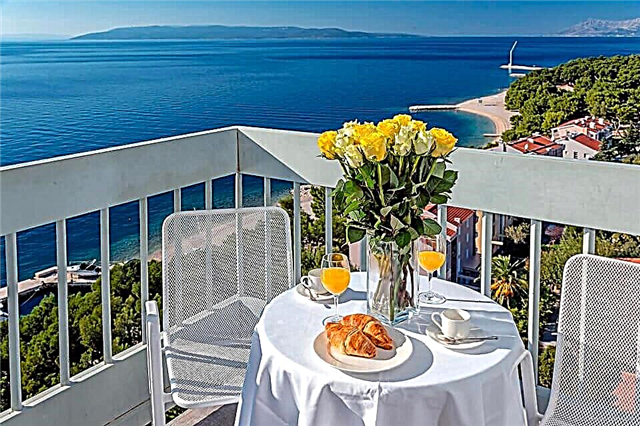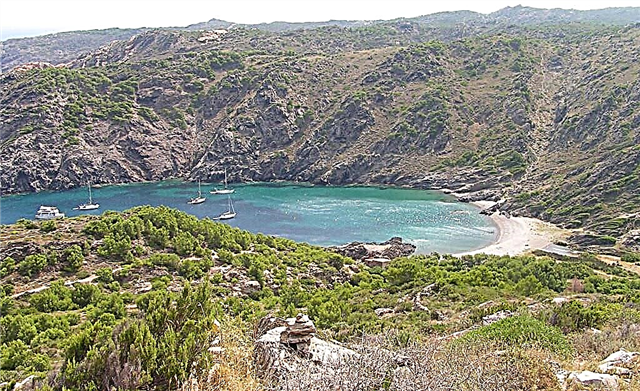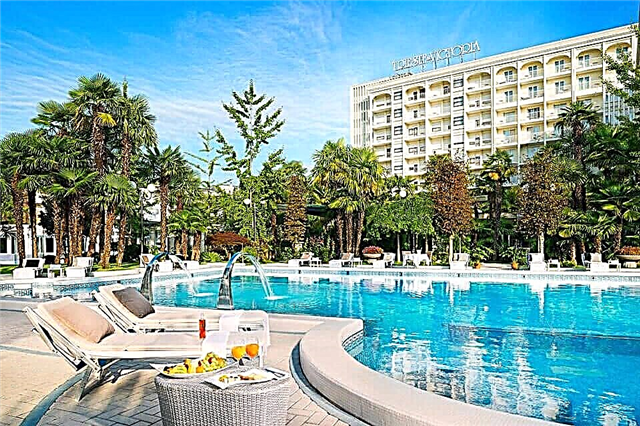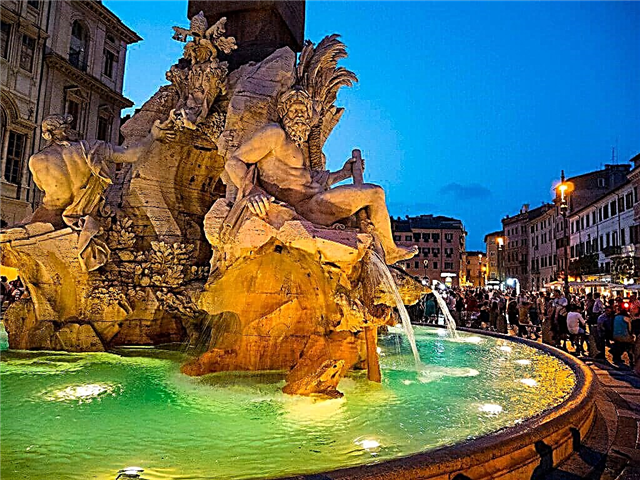The basis for the development of urban planning in Rome was the skillful combination of baroque architecture of buildings with fountains in the form of exquisite sculptural works. In the center of Piazza Navona, where the sports stadium stood during the heyday of the Roman Empire, is one of the most magnificent and beautiful fountains in Rome. The creation of the famous sculpture by Gian Lorenzo Bernini was erected in the middle of the 17th century.
Construction history

In 1644, Innocent X became the head of the Papal State. Coming from the noble family of Pamphilj, Innocent was an adherent of luxurious monumental buildings. On the square, which would later be called Navona, on the initiative of the Pope, the erection of the pontiff's family residence, the basilica and the most beautiful palazzo began. Innocent X viewed this quarter as a courtyard in front of his mansion. Therefore, special attention was paid to decorating and ennobling this territory.
The Pope decided to erect a huge Egyptian obelisk with a majestic fountain on the square. This composition was supposed to symbolize the triumph of the Catholic Church over paganism, as well as to exalt Innocent X even more. Many architects tried to propose their projects, but none of them met the papal intention. The famous master of that era, Gian Lorenzo Bernini, took part in the competition. Initially, the high priest categorically refused the services of the architect due to the fact that he was patronized by the previous Pope Urban VIII, with whom Innocent X had previously had tensions.
Legend has it that when the Pope was walking around the square, the cunning Bernini laid out sketches of the planned fountain of rivers on his way. The drawings amazed Innocent X with their perfection. According to the plan, the sculptors were supposed to personify the missionary activity of the Catholic Church throughout the world. The idea of the architect interested the Pope by the fact that the fountain visually proclaims the high priest the ruler of the whole world. The ingenious architect was immediately given the honor to lead the construction of the four rivers fountain.
The ambitious project involved large financial costs, so Innocent X introduced unpopular taxes on bread, meat and salt for citizens. This displeased the Romans. Bernini worked with a large group of his students. The completion of the construction of the fountain took place in 1651. The artists filled the images of the sculptures with life-giving energy and strength. The statue is still impressive and delights numerous crowds of tourists. The swimming pool with sculptures and obelisk is located opposite the Basilica of Santa Agnese, whose architect was Francesco Borromini - Bernini's nemesis.
There are several amusing stories associated with the fountain of the four rivers. According to rumors, the figures of the fountain seem to show contempt for the creation of Borromini in their appearance. One of the figures has its back to the church, and the head of the other sculpture is covered with a cape so as not to see the temple. The third statue, with a raised hand, allegedly depicts the fright from the basilica seen.
Another story tells that Bernini made a mistake in the construction of the fountain, as a result of which water did not enter the tank. Borromini figured out the reason why the fountain did not work. He looked forward to the failure of his competitor. However, at the grand opening of the monumental structure, water still filled the sculptural work. Bernini managed to correct the shortcomings thanks to the tips received from the servant Borromini, who secretly stole the correct calculations of the owner.
Description of the fountain of the four rivers in Rome
The main concept of the fountain is the embodiment of Catholicism on the four continents of the world (at the time of the construction of the structure, Australia was an unknown land for Europeans). The fountain is a large travertine rock with water jets pouring out of it. At the corners of the slab sit expressive, gigantic, muscular marble human figures. They embody the famous large rivers of the 17th century in allegorical form. These are the Nile, Ganges, Danube and Rio dela Plata.

The sculptures are surrounded by animal and plant figures corresponding to the continents shown. The lipped savage, sitting next to the snake and the crocodile, rests his elbow on the innumerable treasures in the form of silver coins. This image characterizes the natural resources of the South American river Rio del Plata. The figure, near which you can see a lion and a palm tree, symbolizes the Nile. It is noteworthy that at that time the sources of the African river were still unexplored. Therefore, the face of the sculpture is symbolically covered with a cloth.

The Ganges River is represented by a man with an oar, around which a dragon has twisted. The figure demonstrates the rapid development of shipping navigation in the South Asian region. The marble giant, facing the embossed scroll with the coat of arms of the Pope at the top of the cliff, represents the Danube River. Thus, the authority of Christianity in the world is confirmed. At the base of the cliff, you can see a horse jumping out onto a flourishing European plain.

In the center of the pool is a sixteen-meter granite obelisk, the pyramidal top of which is adorned with the image of the coat of arms of Innocent X - a dove with an olive branch. Pilon is considered one of the ancient monuments in Rome. It was specially brought from Egypt to decorate a sports stadium under the emperor Maxentius in 309. Chariot races were held around the monument. Later, the obelisk split into several parts. For a long time, he was among the wreckage of the ancient Roman region. In 1649, at the initiative of Innocent X, the monument was restored and literally assembled piece by piece.
Where is it and how to get there
Bernini's masterpiece is located in the center of Piazza Navona. The nearest metro station (Barberini) is far from the fountain. Therefore, you can get to the sights by bus. There are many routes running there.











